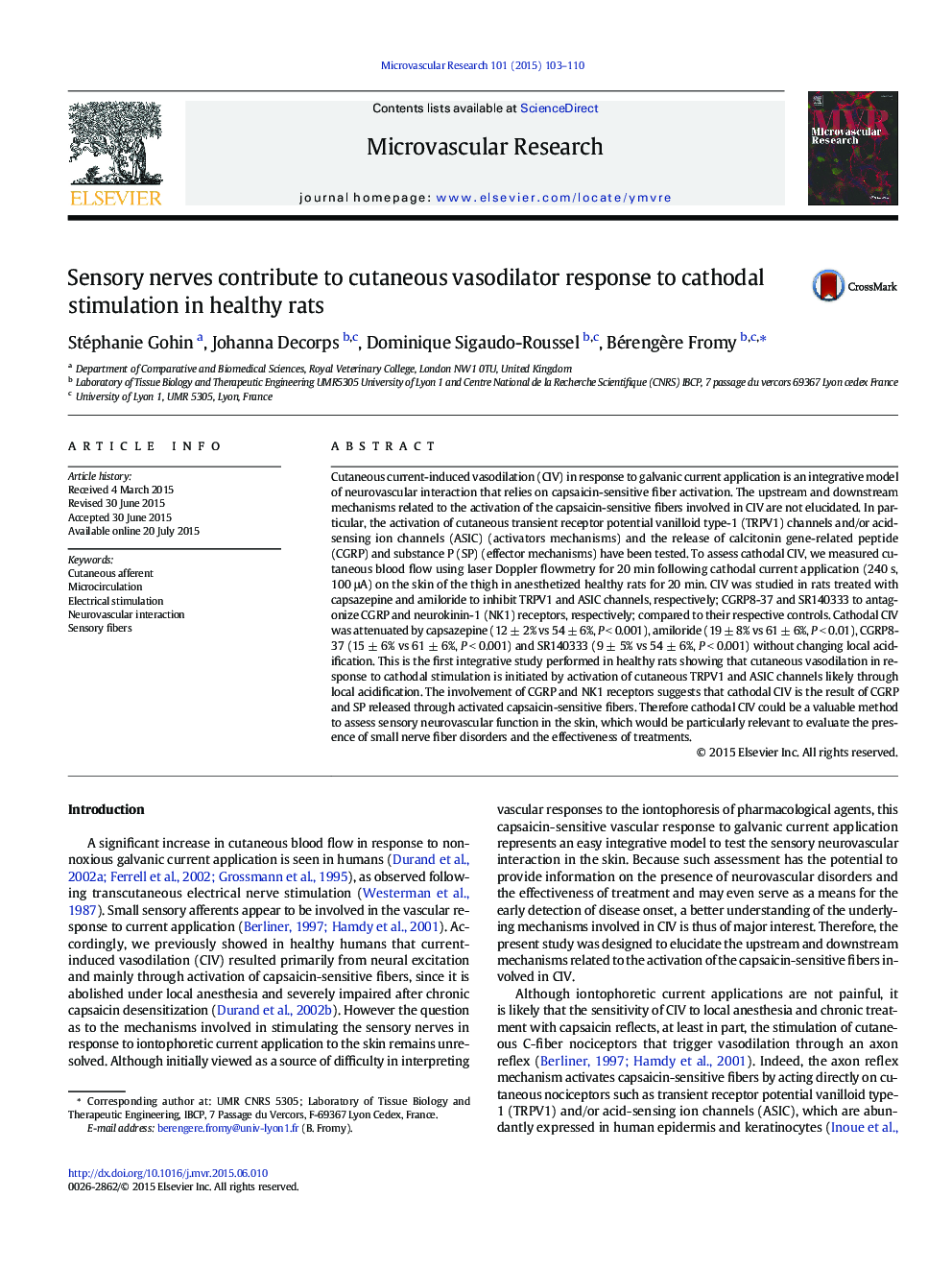| Article ID | Journal | Published Year | Pages | File Type |
|---|---|---|---|---|
| 8341151 | Microvascular Research | 2015 | 8 Pages |
Abstract
Cutaneous current-induced vasodilation (CIV) in response to galvanic current application is an integrative model of neurovascular interaction that relies on capsaicin-sensitive fiber activation. The upstream and downstream mechanisms related to the activation of the capsaicin-sensitive fibers involved in CIV are not elucidated. In particular, the activation of cutaneous transient receptor potential vanilloid type-1 (TRPV1) channels and/or acid-sensing ion channels (ASIC) (activators mechanisms) and the release of calcitonin gene-related peptide (CGRP) and substance P (SP) (effector mechanisms) have been tested. To assess cathodal CIV, we measured cutaneous blood flow using laser Doppler flowmetry for 20 min following cathodal current application (240 s, 100 μA) on the skin of the thigh in anesthetized healthy rats for 20 min. CIV was studied in rats treated with capsazepine and amiloride to inhibit TRPV1 and ASIC channels, respectively; CGRP8-37 and SR140333 to antagonize CGRP and neurokinin-1 (NK1) receptors, respectively; compared to their respective controls. Cathodal CIV was attenuated by capsazepine (12 ± 2% vs 54 ± 6%, P < 0.001), amiloride (19 ± 8% vs 61 ± 6%, P < 0.01), CGRP8-37 (15 ± 6% vs 61 ± 6%, P < 0.001) and SR140333 (9 ± 5% vs 54 ± 6%, P < 0.001) without changing local acidification. This is the first integrative study performed in healthy rats showing that cutaneous vasodilation in response to cathodal stimulation is initiated by activation of cutaneous TRPV1 and ASIC channels likely through local acidification. The involvement of CGRP and NK1 receptors suggests that cathodal CIV is the result of CGRP and SP released through activated capsaicin-sensitive fibers. Therefore cathodal CIV could be a valuable method to assess sensory neurovascular function in the skin, which would be particularly relevant to evaluate the presence of small nerve fiber disorders and the effectiveness of treatments.
Related Topics
Life Sciences
Biochemistry, Genetics and Molecular Biology
Biochemistry
Authors
Stéphanie Gohin, Johanna Decorps, Dominique Sigaudo-Roussel, Bérengère Fromy,
